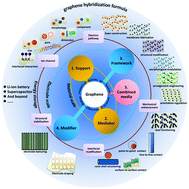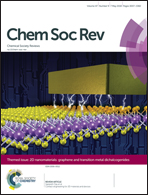Graphene hybridization for energy storage applications
Abstract
Graphene has attracted considerable attention due to its unique two-dimensional structure, high electronic mobility, exceptional thermal conductivity, excellent optical transmittance, good mechanical strength, and ultrahigh surface area. To meet the ever increasing demand for portable electronic products, electric vehicles, smart grids, and renewable energy integrations, hybridizing graphene with various functions and components has been demonstrated to be a versatile and powerful strategy to significantly enhance the performance of various energy storage systems such as lithium-ion batteries, supercapacitors and beyond, because such hybridization can result in synergistic effects that combine the best merits of involved components and confer new functions and properties, thereby improving the charge/discharge efficiencies and capabilities, energy/power densities, and cycle life of these energy storage systems. This review will focus on diverse graphene hybridization principles and strategies for energy storage applications, and the proposed outline is as follows. First, graphene and its fundamental properties, followed by graphene hybrids and related hybridization motivation, are introduced. Second, the developed hybridization formulas of using graphene for lithium-ion batteries are systematically categorized from the viewpoint of material structure design, bulk electrode construction, and material/electrode collaborative engineering; the latest representative progress on anodes and cathodes of lithium-ion batteries will be reviewed following such classifications. Third, similar hybridization formulas for graphene-based supercapacitor electrodes will be summarized and discussed as well. Fourth, the recently emerging hybridization formulas for other graphene-based energy storage devices will be briefed in combination with typical examples. Finally, future prospects and directions on the exploration of graphene hybridization toward the design and construction of viable, high-class, and even newly-featured (e.g., flexible) energy storage materials, electrodes, and systems will be presented.

- This article is part of the themed collection: 2D nanomaterials: graphene and transition metal dichalcogenides


 Please wait while we load your content...
Please wait while we load your content...